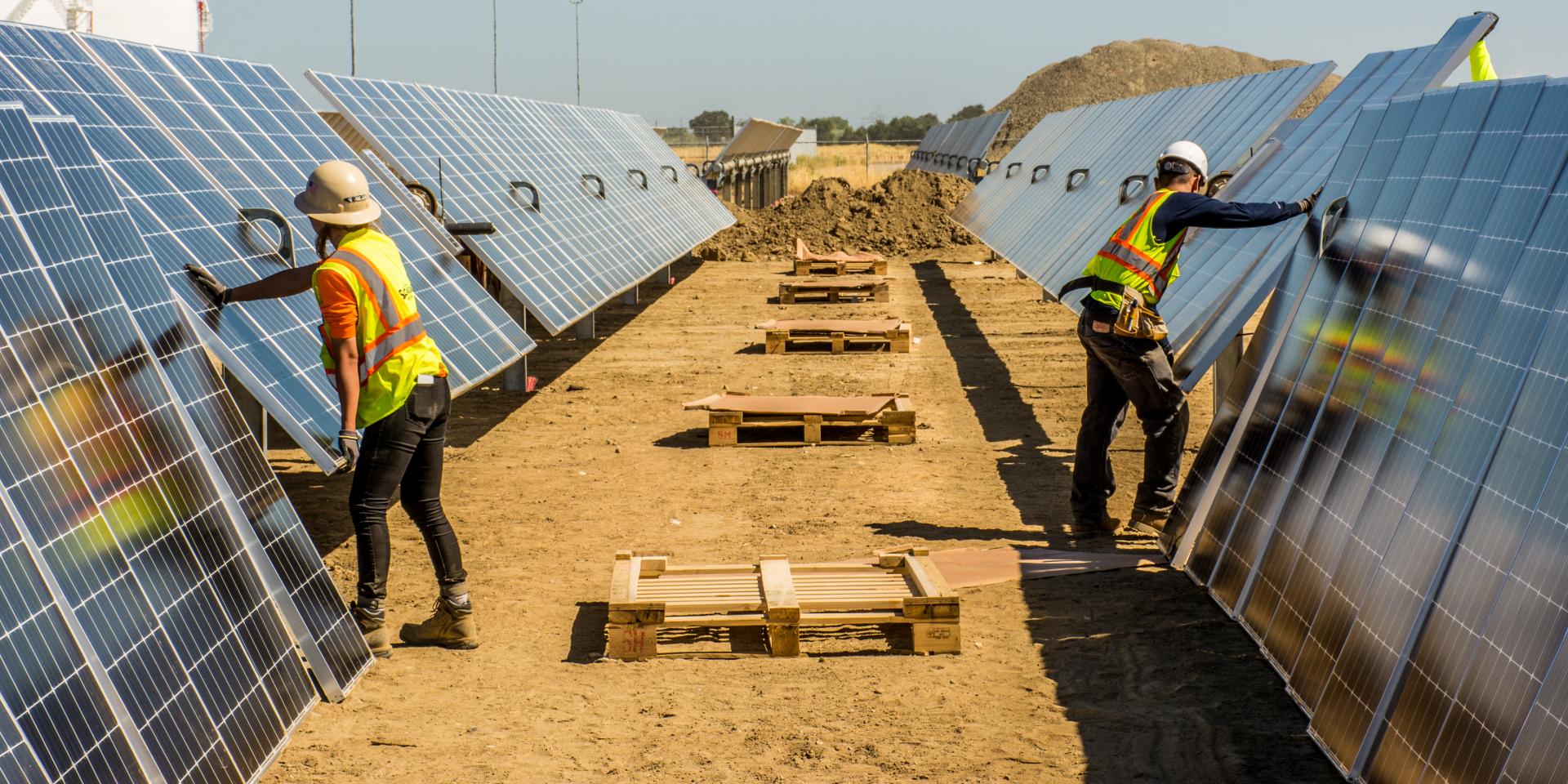SPI Sneak Preview: Three Ways to Make the Solar Value Chain More Sustainable
Thursday, Sep 19 2019

It’s easy to confuse ‘renewable’ with ‘sustainable.’ Both principles lie at the core of the solar energy industry. While energy from the sun is renewable, it’s our responsibility to ensure that, as our industry grows, we take the necessary steps to create a sustainable future throughout our entire value chain. Here, I cover three areas where we can drive meaningful change on the path to sustainability.
Improving Efficiency
The solar industry is working to minimize the impact of manufacturing the systems that generate solar power while increasing the effectiveness of those products through constant technology innovation. Current photovoltaic (PV) technology can last for decades, especially if properly maintained. Longer lifespans for these modules will mean that they need to be replaced less often and that they can reliably perform to contract and overall service lifetime expectations. Additionally, advancements in research and development are improving the conversion efficiency of solar cells in panels, which means fewer raw materials will be needed to produce the same amount of electricity from fewer panels.
Recycling and Waste Management
Improving efficiency and reducing environmental impacts on the front end of the value chain will remain a priority but will not be enough alone to achieve solar sustainability. We also need to look forward and plan proactively to manage end-of-life disposition of the technology associated with solar power. In an early-loss scenario, and based on prior growth expectations, the United States is projected to have 7.5 million metric tons of PV module waste by 2050, according to a report by the International Renewable Energy Agency. It will require a concerted effort from the solar industry and the businesses and customers incorporating solar to ensure the PV panels are managed in a sustainable way when they reach the end of their expected service lifetime.
One solution is re-using solar panels that are still functional and may continue to meet safety standards. There is a growing market for resale or refurbished solar panels, and many are put to use in charitable, or off-grid projects as some modules that are damaged, either in transit or due to weather, may be repaired; those that still operate safety may continue to be used in grid-connected projects. But what happens when re-use is not an option?
Most of the materials in PV modules, like glass, plastic, and aluminum, are recyclable commodities which recyclers can process, but the panels may also contain trace amounts of metals, like silver, tin, and lead, which means they require special handling and processing at a recycling facility. Some of the materials like silicon, glass, silver, aluminum can be reused in other products or to make new solar cells or modules. Industry advocates that modules not end up in landfills. There can be considerable value in recovering solar panel materials. The International Renewable Energy Agency report projects that by 2050, enough raw materials could be recovered to produce 2 billion new panels, which is enough to generate 630 gigawatts of energy, placing the value of those materials at $15 billion.
Currently, research and development on solutions for solar waste focuses on ways to optimally extract these valuable materials from PV modules, while safely managing any potentially hazardous materials, and recycling what is possible. The market for this type of PV recycling is in its initial development phase. Creating the network infrastructure involves thoughtful, diligent planning and support and investment from industry and stakeholders. SEIA is working to make sure that, as more research allows for better recycling options, there are processes in place to facilitate sustainable end-of-life solutions across the U.S. Guided by our PV Recycling Working Group, which launched SEIA’s national PV Recycling Program in 2016, we evaluate, develop and select Preferred Recycling Partners, which are capable of recycling PV modules, inverters, and other equipment. Moving forward, it will be critical to expand the number of recyclers and ensure these services are economically viable and located throughout the country, particularly where solar is widely deployed.
Using Land Effectively
Land use is another sustainability challenge facing the solar industry. Utility-scale projects, an effective way of delivering substantial megawatts of renewable energy, have certain space requirements due to screening and other considerations However, according to the National Renewable Energy Laboratory, you only need 0.6 percent of total land area in the United States to generate enough electricity to power the entire country. Solar developers already prioritize otherwise unusable space when evaluating where to place arrays. To prevent the loss of land, they develop plants on abandoned mining land, brownfields, rooftops, and in desert areas with little to no vegetation. Research is also being done to see whether there are certain crops that thrive when grown beneath solar panels, so that farms can benefit from solar electricity without sacrificing the productivity of their land.
The solar industry is addressing challenges related to sustainability head-on. Collectively, we need to live up to the promise of solar as a sustainable industry. I look forward to continuing the sustainability conversation during the panel discussion titled “Sustainable Pathways for Solar” at Solar Power International (SPI) in Salt Lake City on Wednesday, September 25 at 1 PM MT. Along with several experts, we’ll discuss the latest approaches for extending sustainability throughout the solar value chain, the value of a sustainability approach for individual organizations and industry, and examples of how solar companies today are implementing solutions to showcase their commitment to sustainability.
This post is one of a series of SPI Sneak Previews written by staff at the Solar Energy Industries Association. To read other posts in this series or to find out what else SEIA has planned for Solar Power International and North America Smart Energy Week, visit our website at seia.org/spi.